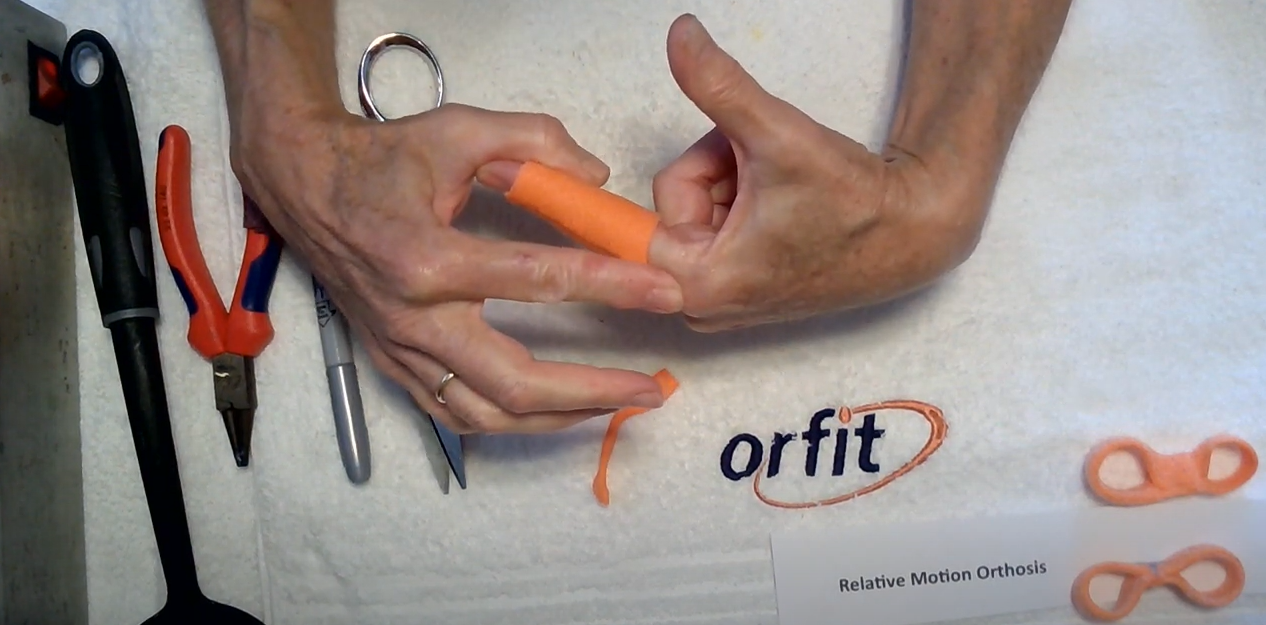
Unique Orthoses for the Proximal Inter-phalangeal (PIP) Joint
A video tutorial

The Proximal Inter-phalangeal or PIP joint is a hinge joint that is normally kept in alignment by a soft-tissue envelope consisting of the joint capsule, the volar plate, the collateral ligaments, and the central slip. These soft tissue structures form a tight-fitting “box” within a very small joint space. Injuries to these soft tissues can be either partial or complete and can lead to serious functional deficits.
The PIP joint is prone to becoming very stiff after injury or surgery due to the fact that this is a complex tight space with lots of soft tissue structures. The PIP joint does not easily tolerate any degree of edema, or strains.
The consequences of an injury to the PIP joint and surrounding structures can lead to prolonged immobilization which in turn leads to edema, soft tissue imbalances and adhesions. This causes joint stiffness, pain, arthritis, and various deformities.
Knowing which soft tissue structures are involved can help with an accurate diagnosis which in turn can lead to the appropriate treatment.
Here we feature a variety of orthoses for the PIP joint for different clinical conditions.
1. Volar plate and /or Collateral ligament injury
The treatment for the injured volar plate and /or following a dorsal dislocation of the PIP joint has the finger in a flexed position with limits to full extension. Full flexion is allowed. Our orthotic design called a “Hinged PIP Flexion Block Orthosis” features Orficast hinges to allow for limited motion in flexion while blocking full extension.
2. Stiffness of the PIP and DIP Joints
When the PIP and DIP joints are stiff and a patient is having difficulty with active motion, we also assign passive motion exercises. An orthosis that also places passive tension on the flexed PIP and DIP joints can help to increase passive range of motion. Our design for a “Static Progressive Finger Flexion cuff” allows for controlling the amount of tension applied.
3. Hyperextension of the PIP Joint
Laxity of the collateral ligaments can cause the PIP joint to hyperextend, making functional use of the finger difficult. A “Figure of 8” orthosis prevents full extension while allowing for full flexion of the joint. This orthosis features rolling the Orficast material into a tight tubular shape.
4. Limited active extension
Damage to the extensor mechanism on the dorsum of the finger and/ or nerve damage to the intrinsic muscles of the hand can cause difficulty with active extension of the PIP joint. A Capener style orthosis with coils positioned at the axis of motion of the PIP joint can assist with extension.
5. A Boutonniere deformity
The boutonniere deformity of the finger typically involves rupture of the Central Slip of the extensor mechanism. The finger quickly becomes swollen and postures in flexion which can often lead to contractures. A simple circumferential extension orthosis can help with swelling and maintaining the extended position for healing.
6. Lack of full PIP flexion and/ or PIP extension
While best known for positioning the Metacarpo-phalangeal joints in relatively more extension or flexion than adjacent fingers, the Relative Motion orthosis has a strong impact on the motion of the PIP joint. You can see how to manage flexion and or extension deficits with a relative motion orthosis with our fabrication video.
Sign in to receive a link to our video demonstration of the above-mentioned orthoses for the PIP joint.
And check out all of our orthotic fabrication courses on the Orfit Academy at https://www.orfit.com/physical-rehabilitation/academy/ to see other great fabrication videos.
![]()

Written by Debby Schwartz, OTD, OTR/L, CHT
Physical Rehabilitation Product and Educational Specialist at Orfit Industries America.
Debby is a certified hand therapist with over 36 years of clinical experience. She completed her Doctorate of Occupational Therapy at Rocky Mountain University of Health Professions in 2010. She has worked at Orfit Industries America as Product and Educational Specialist since 2007.
Debby is also an adjunct professor at the Occupational Therapy Department of Touro University, School of Health Sciences, and at the Occupational Therapy Department at Yeshiva University, Katz School of Science and Health in NYC. She has written many book chapters in the field of hand therapy and multiple articles for hand therapy journals, including the ASHT Times and the Journal of Hand Therapy. She has published a new textbook on orthotic fabrication together with Dr. Katherine Schofield, entitled “Orthotic Design and Fabrication for the Upper Extremity: A Practical Guide”.
![]()



